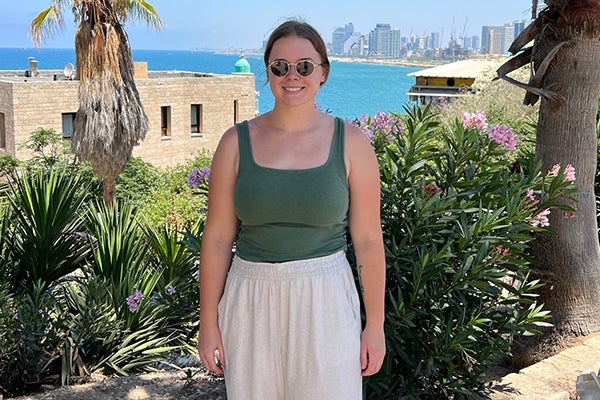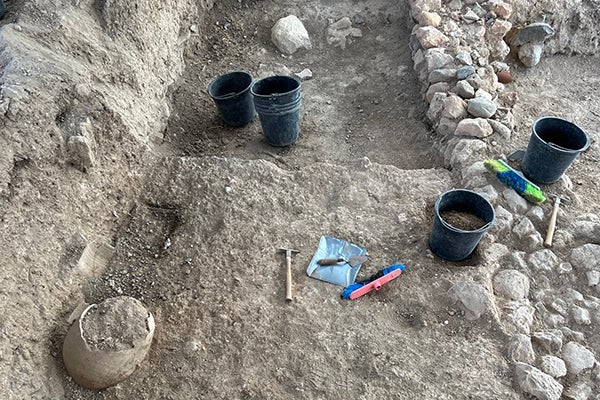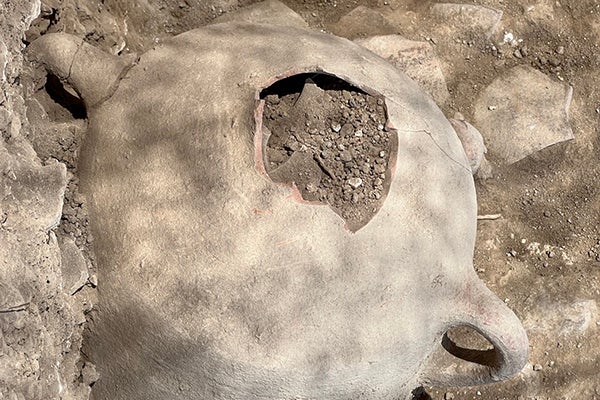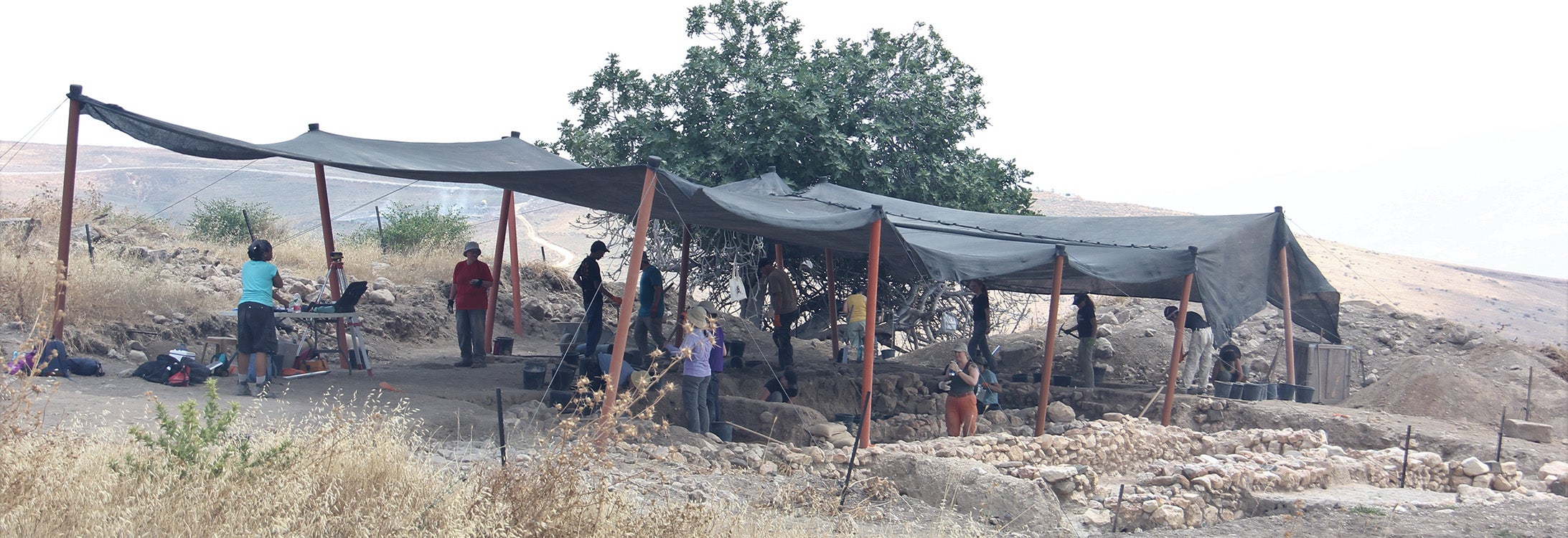TRANSFORMATIVE INTERNATIONAL RESEARCH
ECU graduate student unearths history in Israel
This summer, East Carolina University graduate student Madison “Madie” Elsner participated in unique, transformative fieldwork at Tel Abel Beth Maacah, Israel, near the border of Lebanon. Through the three-week, hands-on excavation, Elsner learned about Levantine Phoenician material culture, religion and daily life from the first millennium B.C.E., more than 3,000 years ago.
“When I heard I would be participating in the summer excavation, I was excited,” said Elsner, who is pursuing her Master of Arts degree in maritime studies from the Department of History in the Thomas Harriot College of Arts and Sciences. “I had never been to Israel, though I had always wanted to go, and I was excited to see what the country and the dig was like.”

Elsner visited the city of Tel Aviv, Israel, during a weekend when she was not at the excavation site.
According to Dr. Helen Dixon, assistant professor of history and Elsner’s advisor, the site of Abel Beth Maacah was on several important roads in antiquity and is mentioned three times in the Hebrew Bible (2 Samuel 20:14, 1 Kings 15:20, and 2 Kings 15:29). She said it is a crossroads of exchange between the Israelites, Phoenicians and Arameans.
The project at Abel Beth Maacah first got underway with a survey in 2012 and an excavation in 2013. Now, it is an ongoing project between the Hebrew University of Jerusalem and Azusa Pacific University in Los Angeles. Elsner’s participation in the research was funded through one of the project’s scholarships, the Johnson Family Scholarship, and an anonymous donor who provided the international plane ticket.
“I’m very proud of Madie’s work to make this happen,” Dixon said. “It is always exciting to see an ECU graduate student conducting original research, or getting immersive hands-on experience, but it makes us even prouder when our students represent ECU internationally. Being fully funded to travel to Israel shows Madie’s strength as a student and her impressive dedication to her master’s thesis topic.”
For her thesis research, Elsner is examining maritime iconography on Punic stelae — decorations typically found in limestone used as monuments of art and religion — from the infant cremation cemetery site at Carthage, a Phoenician colony in Tunisia.
“Phoenicians living along the coast of what is today Israel, Lebanon and Syria in the first millennium B.C.E. took their culture and beliefs with them when they settled sites in North Africa like Carthage,” Dixon said. “There they evolved in new ways, influenced by the people and traditions already present. Historians call those new diaspora communities Punic.”
While in Israel, Elsner and fellow researchers woke up at 4 a.m. to leave the Tel, the community and hostel where they were staying, and ride a bus to the site. This year, the site was divided into three major areas and participants were assigned a specific area to excavate. They worked until noon or 1 p.m. each weekday.

Elsner was assigned to work in area K during her time at the Abel Beth Maacah excavation site in Israel.

Various pots were uncovered at the Abel Beth Maacah excavation site where Elsner worked.
“We started each morning by collecting any loose sediment so that our squares would be clean for pictures and to document any findings and progress along the way,” Elsner said. “I was assigned area K, which was a storehouse. As a group, we added about 10 new squares to the previously excavated areas.
“In previous excavations, walls separating rooms and jars were found. These would have contained possibly grain or other goods,” she said. “This year, we uncovered more of these walls, showing us that this area is much bigger than what was expected. Also, we uncovered broken jars and three mostly intact jars that would have been stored in rooms that the community could access.”
“This excavation gave me a new archaeological experience that expanded my knowledge and built off the coursework from my undergraduate degree and my current graduate degree work,” Elsner said.
During her time in Israel, Elsner traveled on the weekends, visiting the Sea of Galilee and Haifa, the location of the National Maritime Museum.
“Madie’s thesis will be much stronger now that it is informed by the Levantine Phoenician material culture she encountered on the excavation and the archaeological museums she visited while in Israel,” said Dixon.
